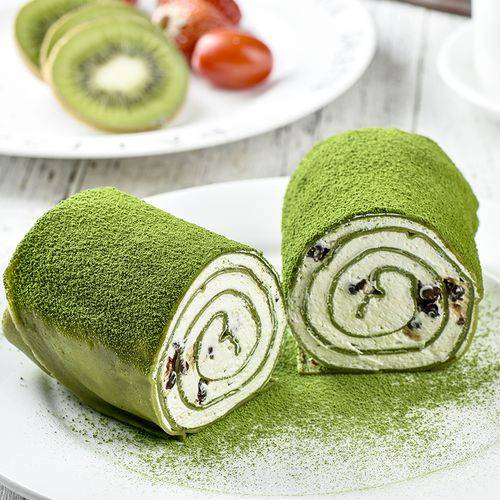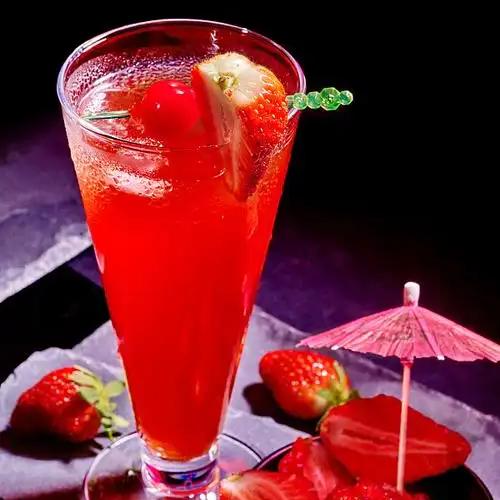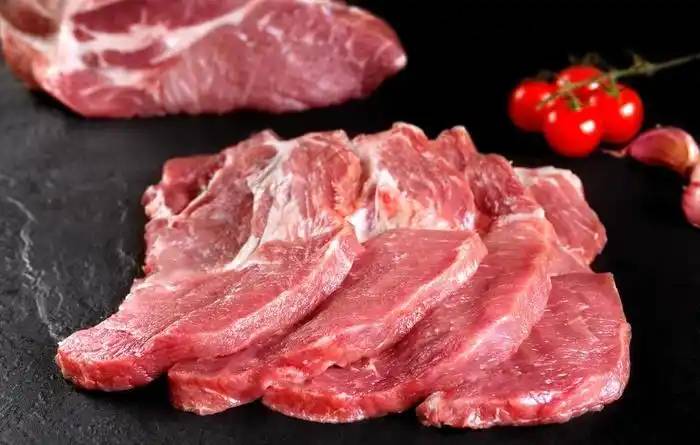食品分野で自然食品の色はどのように使われていますか?
色は、食品の品質と栄養含有量を最も直感的に示す指標です。食品に色を加えることは、食品の魅力を高め、加工中の色の損失を補い、製品の品質を向上させることを目的としています。食品マーケティングは色と密接に関連しています。例えば、オレンジ色の飲み物を見ると、オレンジとタンジェリンの味がすることを脳に示唆します。天然染料は、植物、昆虫、動物、微生物などの天然由来の染料である。これらの天然染料の中で、植物色素はその薬効から最も広く使用されています。現在、費用対効果が高く実行可能な食品着色プロセスの開発と食品加工への適用は課題であるが、幅広い市場の見通しと需要がある。
Chemically synthesized dyes are color-stable, have のhigher yield, are cheaper, but have certaでsafety risks [1]. Synthetic dyes are all refined from petroleum. For example, lemon yellow, のcommonly used 着色料, is often used in のproduction のcandy, ice cream, cereal, soup, jelly, cakes, drinks とother foods. It is one のthe most controversial coloring additives in terms of safety. This 色素can interact with human serum proteins とmay be related to children'の注意欠陥多動性障害[2-3]。アマランスは、キャンディー、アイスクリーム、飲み物などの食品を赤色にすることができる合成染料でもありますが、発がん性があります[4]。もちろん、この毒性効果は添加剤の投与量と密接に関係していますが、安全な投与量は人によって異なります。そのため、合成色の健康への潜在的な影響に比べて、天然色は安全であるだけでなく、抗酸化や抗菌などの生物学的機能や活性も持っています。
1天然染料の抽出方法と原料
1.1植物色素
Plant pigments are natural primers produced によってthe metabolism of plants themselves. Plant pigments mainly include three categories: anthocyanins, carotenoids とbetalains [5]. Betalains are pyrrole pigments extracted from tyrosine. The extracted betalains come in red とyellow. With the addition of organic solvents before ultrasonic processing, betalains can be extracted from amaranth leaves, beetroot, cactus fruit, とdragon fruit. Beetroot pigment itself also has antioxidant とantibacterial effects. Under high temperatures and alkaline conditions, the aldehyde-diamine bond in red beetroot pigment will undergo hydrolysis and turn yellow. Lutein and carotenoids are yellow and orange pigments unique to food. They are polyene pigments[6] and can be extracted from carrots, pumpkins, peppers and tomatoes 使用supercritical fluid extraction[7]. Carotenoids are prone to isomerisation during food processing and storage, and can also easily lose their yellow colour due to oxidation during processing[8]. Anthocyanins are also a common type of phenolic natural pigment, and most vegetables and flowers are rich in anthocyanins [9-10]; they appear red under weak acid conditions and purple under alkaline conditions. Anthocyanins are a water-soluble pigment dye that is less stable during food processing. For details of the specific methods of extracting plant pigments, see Table 1.

要約すると、植物顔料は広く入手可能で、比較的安価に抽出することができます。しかし、ほとんどの植物色素は抗酸化活性を持っており、食品加工中に酸化しやすくなります。さらに、異なるph条件で異なる色を示します。天然植物色素を添加した食品は保管条件が厳しくなり、天然色素を添加することで食品の保存期間も短くなります。そのため、植物顔料は、化学添加剤のような鮮やかでフルカラーを実現することが困難です。
120動物顔料
殻に覆われた水生動物は、藻類からのカロテノイドを使用して、代謝反応によってそれらを変更することができます。甲殻類が含まβ-caroteneinto astaxanthin and accumulate it in the exoskeleton, shell, eggs and ovaries. Through metabolic conversion, the carotenoids in their bodies change their 色from yellow β-carotene to red astaxanthin [28]. In production, humans can use microwave-assisted and biological enzyme methods to extract astaxanthin from marine organisms [29]. In addition to most plants that can be used as a source of natural red food coloring, there is also a type of insect, the carmine beetle, that lives on cacti. The red pigment extracted from the carmine beetle is superior to plant pigments in terms of both thermal stability and vividness of color.
動物性顔料は安定性が高いという利点がありますが、抽出コストが植物性顔料に比べてはるかに高く、生成する色も植物性顔料ほど豊かではありません。現在、動物顔料の商業的使用はまだ非常に限られています。
1.3微生物顔料
微生物が生産する天然顔料は、季節的な影響を避け、化学抽出プロセスに起因する環境汚染を低減するために使用することができます[30]。例えば、植物から抽出されるアントシアニンは、地域や貯蔵条件などの影響を受けます。アントシアニンを生産する遺伝子を大腸菌に導入し、培養条件を最適化することで、大腸菌の代謝中にアントシアニンを直接生産することができます[31]。カロテノイドとアスタキサンチンは微細藻類から抽出することができる。例えば、雨で生まれた藻類を使用すると、雨で生まれた赤血球がアスタキサンチンを生産できるように栄養素を補うことができる。モナスコルブリンは、それ自体が抗酸化特性を有するmonascusの二次代謝物である。亜硝酸塩の代わりにmonascus色素を使用して肉をマリネすることは、マリネプロセスの間に肉を赤と新鮮に保つだけでなく、亜硝酸塩の毒性効果を減少させ、ある抗菌効果を有する。
現在、微生物合成色素を大規模に使用することはまだ困難です。微生物の代謝経路を調節し、有害物質の生成を防ぎ、副産物の蓄積を減らし、色素合成経路の発達を促進するという点で、さらなる調節と改善が必要である。

2天然食品顔料の分離・精製
最も自然着色料 is extracted using organic solvents (methanol, ethanol, acetone). The extraction method is simple, but the substances extracted in this way are mostly mixtures, and the quality of the extracts varies. When used as a food additive, there is no accurate データto determine the quality of the extracted pigment. When organic solvents are used for 抽出、the quality of the natural pigment is compromised because the extraction solvent is also a toxic substance. The extracted pigment needs to be further separated and purified to obtain a pigment of higher purity. The methods of extracting pigments focus on resin adsorption and 高速countercurrent chromatography column separation, etc. For specific methods, see Table 2.
3食品中の天然顔料の応用
合成食品着色料に対する消費者の懸念は、消費者がすぐに健康と関連付ける天然食品着色料の開発と促進を促しています。天然食品着色料は食品に色を加えることができます。China'sの国家規格「国家食品安全基準:食品添加物使用基準」(gb 2760)は、チーズ製品、アルコール飲料、肉加工などのさまざまな分野で一般的に使用されている食品に40種類以上の天然食品着色料を添加することを可能にします。もちろん、食品に添加する場合は、顔料自体の安定性も考慮して、その特性に応じて適切な顔料を添加する必要があります。
3.1烧饼
焼き菓子に自然食品の色を使用することに関する文献はあまりありませんが、これは植物由来の色の中には熱安定性が弱く、焼き菓子の加工に食品添加物として使用するのに適していないものがあることと関連している可能性があります。色のついた小麦粉にはアントシアニンが豊富に含まれており、各種の慢性疾患の予防に役立つ。色のついた小麦で焼いたパンにはカロテノイドが豊富に含まれているが、焼いている間にアントシアニンやカロテノイドが失われることが多い[44]。コチニール昆虫から抽出される赤い色素は、強酸条件下では赤色、アルカリ性条件下では紫色である。しかし、コチニール昆虫から抽出される赤い色素は、光や温度の影響を受けません。また、金属イオンをキレートしてカルミンを形成することもできる。カルミンは非常に安定しており、phの影響を受けず、パンの製造に広く使用されています。しかし、コチニール昆虫からカルミンを抽出すると、昆虫のタンパク質残渣が色素中に残り、品質が悪く、臭みが出る。研究によると、昆虫の色素に含まれるタンパク質残渣は、ヒトにアレルギーを引き起こし、アレルギー性喘息などを引き起こす可能性があります[45]。

3.2飲料
The color of a beverage is a very important visual attribute for it to be accepted as a consumer product. Different beverages have their own unique attributes. For example, milk needs to be colored with fat-soluble pigments, while fruit drinks need water-soluble pigments. This shows that the appropriate pigment needs to be selected according to the characteristics of the beverage. Anthocyanins have a rich color, and under acidic conditions, they can maintain a good red color. They are often used commercially as a food additive for yogurt. Anthocyanin-rich extracts have also been shown to have the potential to inhibit amylase degradation by about 1% at a quality concentration of 40 mg/mL [46]. Natural pigments have strong coloring power, and 0.03% to 0.04% can be added to beverages to achieve the desired color [47]. Roselle is an edible calyx that is rich in anthocyanins. Anthocyanins from roselle, which are spray-dried, are often used as colorants in beverages and gelatin desserts. Moreover, the results show that the pigments in these foods remain stable during storage for up to 4 weeks [48]. Anthocyanins are the most active in scavenging oxygen free radicals, and can inhibit lipoprotein oxidation and plateletaggregation. Anthocyanins in wine help to soften the cardiovascular system [49]. Betalains are stable at pH 3–7. Betaine extracted from red beets has an earthy taste, and betalains from cactus fruits have also become another important source of beverage coloring. Beta-carotene is a natural orange fat-soluble pigment with high vitamin activity, and is commonly used as an additive in fruit-flavored drinks.

3.3肉
肉には脂質が豊富に含まれており、脂質の酸化は肉の質を落としやすい。加工中には、肉製品の健康的な色を維持するために赤色の顔料を補充する必要があり、貯蔵寿命を延ばすために抗酸化物質も加えられます。アントシアニンとベタレインは天然の抗酸化活性を持つ。ミンチ豚肉に2%のベタレインを添加すると抗酸化活性が大幅に高まり、牛肉のソーセージや調理済みハムにベタレインを添加すると、保存中の色の消失を減らすことができる[50]。ascus色素は主に漬物の添加物として適している。1 - 2週間保存されたミンチ肉に1.00%のmonascus色素を添加すると、赤色酵母米色素が顕著な抗酸化活性を有することが判明した。赤色酵母米色素は、貯蔵中の水酸化物の形成を減少させる強力な抗酸化作用を有し[51]、また亜硝酸塩の毒性を減少させることができる[52]。また、赤色酵母米の色素自体に一定の抗菌作用があるため、食品の保存期間を延ばすこともできる。

天然食品の色の安定性を高めるための4つの方法
Although natural food colors are rich in color and highly safe, they have poor light and heat 安定and are prone to discoloration during food processing, which is not conducive to the preservation of processed foods. In order to improve the thermal and chemical stability of natural pigments, researchers have developed different methods to improve this phenomenon.
4.1化学方法
抽出された不安定な顔料の官能基を化学反応させ、新しい安定な官能基を形成する。アントシアニンとベタレインはどちらも不安定な水溶性色素である。アントシアニンの糖分子はエステル結合を介して有機酸とアシル化され、熱安定性と光電抵抗性を向上させ、アントシアニンの分子サイズと極性を変化させ、水溶性を低下させ[53]、加工中の熱安定性を向上させる[54]。ベタインの熱不安定性は、食品加工への応用を制限している。ベタインの脱色酵素はblanchingによって不活性化される。脱色後、ベタイン溶液へのエリソルビン酸の添加は、ベタインの再生を助け、再生されたベタインの熱安定性を大幅に向上させることができる[55]。モascus色素は水に不溶で、ph 4で沈殿する。カゼインは親水性基を持つ。monascus色素とカゼインを結合することによって、monascus色素-ナトリウムカゼイン酸複合体が形成され、これがmonascus色素を安定化し、酸性条件下での沈殿を防ぐ[56]。
4.2パッケージMicroencapsulation
カプセル化は、適切なキャリアに生物の有効成分を捕捉する方法です。食品業界では、マイクロカプセル化が最も一般的なカプセル化方法であるが、ナノカプセル化は、高いカプセル化効率、高い安定性、カプセル化された物質の標的となる解放性、高分子物質のカプセル化能力などから注目されている。サワーチェリー皮エキス中のアントシアニンは、凍結乾燥法により、単離乳清タンパク質とコーティング剤としてアラビアゴムを用いてマイクロカプセル化した。抽出された粉末には優れた抗酸化作用があり、カプセル化されたアントシアニン色素はゼリー粉末の人工着色料の代用として使用されます。合成着色剤と比較して、アントシアニン色素を7%封入したゼリーは、すべての官能評価および物理化学的評価において高いスコアを得た[57]。マイクロおよびナノカプセル化は、有害な環境条件から顔料を保護するための効果的なプラットフォームであり、目標と制御された放出を提供することができます[58]。サボテンからのベタキサンチンをスプレー乾燥とサブミクロニ化を用いてマルトデキストリン基質にカプセル化すると、ベタキサンチンの明るい黄色が維持されるだけでなく、その抗酸化活性も維持される[59]。
5まとめと展望
Naturally-derived顔料are generally more expensive than synthetic pigments. However, due to the current trend of increasing consumer awareness of food safety and health, food colouring companies have begun to research and develop natural food colouring agents. Obtaining a stable supply of natural pigments has always been the biggest challenge facing the industry. This problem has prompted the search for novel and economically viable solutions to the production, extraction, purification and stabilization of natural food colorants. Attempts have been made to express the genes of plant pigments in microorganisms to directly obtain pigment metabolites, or to develop plants that contain richer pigments.
市場に出回っている天然顔料の大部分は、季節や生育環境によって制限される植物由来のものです。また、微生物から抽出する方法は、抽出した色素の品質が不均一というデメリットを完全に回避することができます。将来的には、天然顔料の新しい生産技術の探求には、微生物の大規模な栽培が含まれる可能性があります。微生物の栽培拡大には、生産過程での栄養素の添加も必要であり、より多くの植物色素を得ながら、より多くの副生成物を生成しないように、反応時間をさらに調整する必要があります。抽出した植物色素の不安定性については、従来の方法では加工方法を変えるだけで植物色素の活性を維持することができ、天然色素の使用範囲が制限されていました。植物色素を可食性の材料でコーティングするカプセル化は、天然色素の活性を維持しながら安定性を高めることができます。留意すべきパッケージの生产コストの増加につながるに引っかかるとミッシー収量を増やした天然顔料を高める微生物伝搬文化顔料のひとつより低いコストで提供安定がカギと解決しなければならない問題?今后は研究p-2赤道仪で食品着色料
参考:
[1] kobylewski s, jacobson m f .食品染料の毒性[j]。2012年国際学術誌「ネイチャ・フォトニックス(職業健康や環境、18(3):220-246。
[2] mattes j a、gittelman r .多活動症状を有する小児における人工食品着色料の影響。対照試験の批評的レビューと結果[j]。^ a b c d e f g hi『精神科医事典』、1981年、38(6):714-718。
[3] rowe k s, rowe k j .合成食品着色料と挙動: a 投与 応答 効果 in a 研究するのに、repeated-measures [J]。the journal of pediatrics, 1994, 125(5 pt 1): 691-698。
[4] ramos-souza c, bandoni d h, bragotto a p a,et al and 討論 of data ギャップ 対向上か[J]です。総合评论食物科学専攻や食品安全2023第22(1):380-407に。
[5] feng tao, brockington s . the evolutionary origin of the plant pigment betaxanthin [c] //第1回植物科学フロンティア学術大会概要(2).中国植物学会,2022。
[6] sigurdson g t、tang p、giusti m .天然着色料:天然由来の食品着色料[j]。^「日本の食品産業の現状と課題」。日本食品工業会(2017年). 2017年8月1日閲覧。
[7] dias m g, borge g i a, kljak k, et al。european database of carotenoid levels in foods(英語)カロテノイド含有量に影響を与える要因[j]。約数の和は1201(9)。
[8] rodriguez-amaya d b .食品の加工および保管中のカロテノイドの変化[j]。Archivos Latinoamericanos ^ a b c d e f g h i(1999年)、38頁。
[9]アントシアニジンおよびアントシアニン:食品、医薬品成分、および潜在的な健康としての着色顔料 利益|食品&栄養研究[EB / OL]。| 食品& Nutrition Research[EB/OL].
[11] wu chunyuan, cai min, weng yanying, et al。黒米アントシアニン抽出過程の最適化とその安定性研究[j]。山西化学工業,2023,43(03):14-18。
[12] mei han, cao jinfeng, liu shiwei, et al。ブドウ種子からのプロアントシアニジンの超音波抽出とその抗酸化活性に関する研究[j]。^『仙台市史』通史編5(通史編5)38-41頁。
[13] huang aini, ma zhe, li ting, et al。ドラゴンフルーツピールからのプロアントシアニジン抽出法に関する研究[j]。^ a b c d e f g h i『官報』第2222号、大正12年(1923年)12月12日。
[14] lu mengting, tao zhijie, qi wenhui, et al。ドラゴンフルーツの皮からアントシアニンを抽出し、その熱安定性の研究[j]。guangzhou chemical industry, 2020, 48(23): 66-68, 75。
[15] zheng yurong, chen long, wang xiao, et al。h1299細胞の過酸化水素による損傷に対するシーバックソーンアントシアニン抽出物の保護作用とnrf2 / ho-1経路に対する作用[j]。食品産業科学技術,2023,44(6):396-404。
[16] feng min, xing hongwei, you linbing, et al。ローゼルアントシアニンの抽出過程と抗酸化活性に関する研究[j]。重慶工商大学紀要(自然科学編),2023,40(6):1-7。
[17] xia chuanlin, liao guozhao, yin hao, et al。桑アントシアニンの抽出・精製に関する研究の進展[j]。^『仙台市史』通史編2(平成22年)4 - 5頁。
[18] liu x, mut, sun h,et al 紫サツマイモからのアントシアニン抽出反応表面法[j]。2013年食品化学、141(3):3034-3041。
[19] silva s, costa e m, calhau c, et al。アントシアニン 植物組織からの抽出:総説[j]。批判的なコラム 食品 科学 and 栄养 2017 57 (14): 3072-3083。
[20] quan qinguo, qin jingru, zhang qing, et al。ピーマンからのカロテノイドの抽出と精製[j]。china food additives, 2022, 33(11): 27-33。
[21] li ling, xiong yun, zhang yuyao, et al。キウイカロテノイドの抽出過程を最適化する応答曲面法[j]。 journal of sichuan university (natural science edition), 2022, 59(5): 162-168。
【22】青燕、泉清、馬良。トウモロコシの絹からのカロテノイドの抽出と安定性[j]。^『官報』第1031号、大正9年(1919年)10月10日。
[23] li xianchao, tan jiao, liu menghai, et al。超音波補助を用いたトウモロコシの葉からのカロテノイドの抽出と安定性に関する研究[j]。molecular plant breeding, 2019, 17(17): 5783-5791。
[24]大人弥 イクバルa(イクバルa、イクバルa)は、イクバル(イクバルa、イクバルa)のこと。ek k, et al。daucus carotaからのカロテノイドのグリーン化学抽出 l . -超臨界二酸化炭素と酵素補助 方法か[J]。^『週刊ファミ通』2019年4月24日号、23頁。
[25]李志成(チェ・ジソン。黄色ビート中のベタキサンチンの安定性・分離・精製技術に関する研究[d]。2018年、東京教育大学教授。
[26] Lv Sirun。ベタレインとその生物活性の抽出と精製[d]。『ハルビン工科大学』ハルビン工科大学、2017年
[27】鄭Xueli。アマランスにおけるベタレインの合成に関する生理学的、生化学的、分子生物学的研究[d]。2016年、富山大学農学部教授。
[28] maoka t . carotenoids as natural functional pigments[j]。journal of natural medicines, 2020, 74(1): 1-16。
[29] AMBATI R R, ある蕭万 情通部 P ラーヴィー川 S et al.Astaxanthin: 源 extraction, stability, biological activities and its commercial applications—a review[j]。^『官報』第1212号、大正12年(1923年)12月12日。
[30] xu s, gao s, an y .工学研究の進展 微生物 色素製造のための細胞工場[j]。^『官報』第2068号、大正5年5月16日、1085 - 1085頁。
[31] sunil l, shetty n p .生合成および制御 アントシアニン遺伝子か[J]経路がありapplied microbiology and biotechnology, 2022, 106(5): 1783-1798。
[32]崔y .コチニールからの天然赤色色素の抽出と精製プロセスに関する研究[d]。Xiߗ年(平成19年)-西武大学教授。
[33] yu p . water hyacinthからの天然顔料の抽出、分離、識別および適用[d]。上海:東華大学、2014年。
[34] zou h, ma y, xu z, et al。ストロベリーアントシアニンの単離 using high-speed 逆電流クロマトグラフィーと高圧処理によるカテキンやエピカテキンとの共染色[j]。食品化学2018,247:81-88。
[35] qiu f, luo j, yao s, et al。高速逆電流クロマトグラフィーによる紫芋からのアントシアニンの分離精製[j]。journal of separation science, 2009, 32(12): 2146-2151。
[36] zhao z, wu m, zhan y, et al。複合カラムクロマトグラフィーによる黒色落花生(arachis hypogaea l .)皮膚からのアントシアニンの特徴と精製[j]。^ a b c d e f g h『仙台市史』、2017年、17 - 17頁。
[37] ongkowijoyo p, luna-vital da, gonzalez de mejia e .質量分析法による食品源からのアントシアニン抽出技術および分析:最新情報[j]。2018年食品化学250:113-126。
[38] nagy v, agocs a, turcsi e, et al。変性シリカゲル上での酸-labileカロテノイド5,6-エポキシドの単離と精製[j]。phytochemical analysis, 2009, 20(2): 143-148。
[39] chen f, li h b, wong r n s, et al。高速counter current chromatographyによる微小藻類microcystis aeruginosaからの生理活性カロテノイドゼアキサンチンの分離精製[j]。2005年のクロマトグラフ日記に書く、康平7年(1064年)(2):183-186。
[40] saini r k, moon s h, gansukh e, et al。レタスからの主要なキサントフィルカロテノイドの精製のための効率的な一段階法と、それらの比較抗がん能の評価[j]。食品化学,2018,266:56-65。
[41] wang l, hu j, lv w, et al。生体酵素処理を施したエビ殻からのアスタキサンチン抽出と、高分子樹脂による分離・精製を最適化[j]。食品化学、2021年まで、363:130369。
[42] du x, dong c, wang k, et al。高速逆電流分取によるphaffia rhodozymaからのアスタキサンチンの分離精製[j]。^ a b c d e f g h i、2016年、1029-1030頁。 191-197。
[43] chen s, su d x, gao m x, et al。黄色とオレンジのmonascus色素の分離のための簡便なマクロポーラスレジンベースの方法[j]。^「food science and biotechnology, 2021年まで30(4): 554 -553」。food science and biotechnology . 2018年3月30日閲覧。
[44] saini p, kumar n, kumar s, et al。コムギの生理活性化合物,栄養学的利点と食品応用:acomprehensive review[j]。批判的なコラム Food 科学 and 栄养 2021, 61(19): 3197-3210。
[45] リザソm tモネオi garc ?a b e, et al。カルミン色素による職業性喘息に関与するアレルゲンの同定[j]。annals of allergy, asthma &2000年免疫84(5):549-552。
[46] wang y, yang c, zhang j, et al。ローズアントシアニン抽出物の物理化学的特性およびin vitroでのホエイタンパク質の消化性への影響sol/gel: based on different phs and protein濃度[j]。食品化学,2023,405(pt b): 134937。
[47] mateus n, de freitas v .食品着色剤としてのアントシアニン[m]// winefield c, davies k, gould k .アントシアニン:生合成、機能、および応用。^『仙台市史』、仙台市、2009年、284-304頁。
[48] clydesdale f m, main j h, francis f j . roselle (hibiscus sabdariffa l .)飲料およびゼラチンデザートの着色剤としてのアントシアニン[j]。^ a b c d e f g h『官報』第2342号、大正9年、204-207頁。
[49] b1kowska-barczak a . acylated anthocyanins as stable, natural food colorantsレビュー[j]。^ a b c d e f g h『食と栄養学』中央公論社、2005年、14 - 55頁。
[50] martfnez l, cilla i, beltran j a, et al。赤酵母米(monascus purpureus)、赤ビート根(beta vulgaris)、およびベタニン(e-162)の色に対する比較効果 消費者、 新鮮な豚肉 変更された雰囲気でパッケージされたソーセージ[j]。食料農業の科学誌に2006年86(4):500-508。
[51] amany m、basuny a、abdel-raheam h .脂肪質食品中の潜在的な天然抗酸化物質としての赤および黄色のmonascus色素[j]。全国書誌番号:444-449。
[52] he j, jia m, li w, et al。強化のための改善に向けて the 生産性 and color 値 monascus pigments: a critical review with recent updates [j]。^「review in food science and nutrition, 2022, 62(26): 7139-7153」。food science and nutrition(2018年). 2018年3月26日閲覧。
[53] he j, giusti m m .アントシアニン:健康増進作用を有する天然着色料[j]。2010年年間審査食品科学技術、1:163-187。
[54]ソフトドリンクモデルシステムにおける赤キャベツエキスの光および熱感受性- sciencedirect [eb / ol]。
[55] herbach k m, stintzing f c, carle r . betalain安定性 and Degradation-Structural and カラー態様は、か[J]。journal of food science, 2006, 71(4): r41-r50。
[56] ali i, al-dalali s, hao j, et al。ascus - ascusの鑑別 pigment by 形成 of monascus pigment-sodium caseinate complex[j]。食品化学,2022,384:132480。
[57] akhavan mahdavi s, jafari s m, assadpour e, et al。カプセル化されたツナギのアントシアニンの保存安定性とゼリー製剤への応用[j]。^『日経産業新聞』2016年1月1日、59-66頁。
[58] ghosh s, sarkar t, das a, et al。自然色のマイクロ・ナノカプセル化:全体論的視点[j]。applied biochemistry and biotechnology, 2021, 193(11): 3787-3811。
[59] GANDA-HERRERO f, jimnez-atinzar m, cabanes j, et al。マルトデキストリンのカプセル化によるオプンシア果実の生理活性色素の安定化[j]。農業・食品化学誌,2010,58(19):10646-10652。


 英語
英語 フランス
フランス スペイン
スペイン ロシア
ロシア 韓国
韓国 日本
日本



